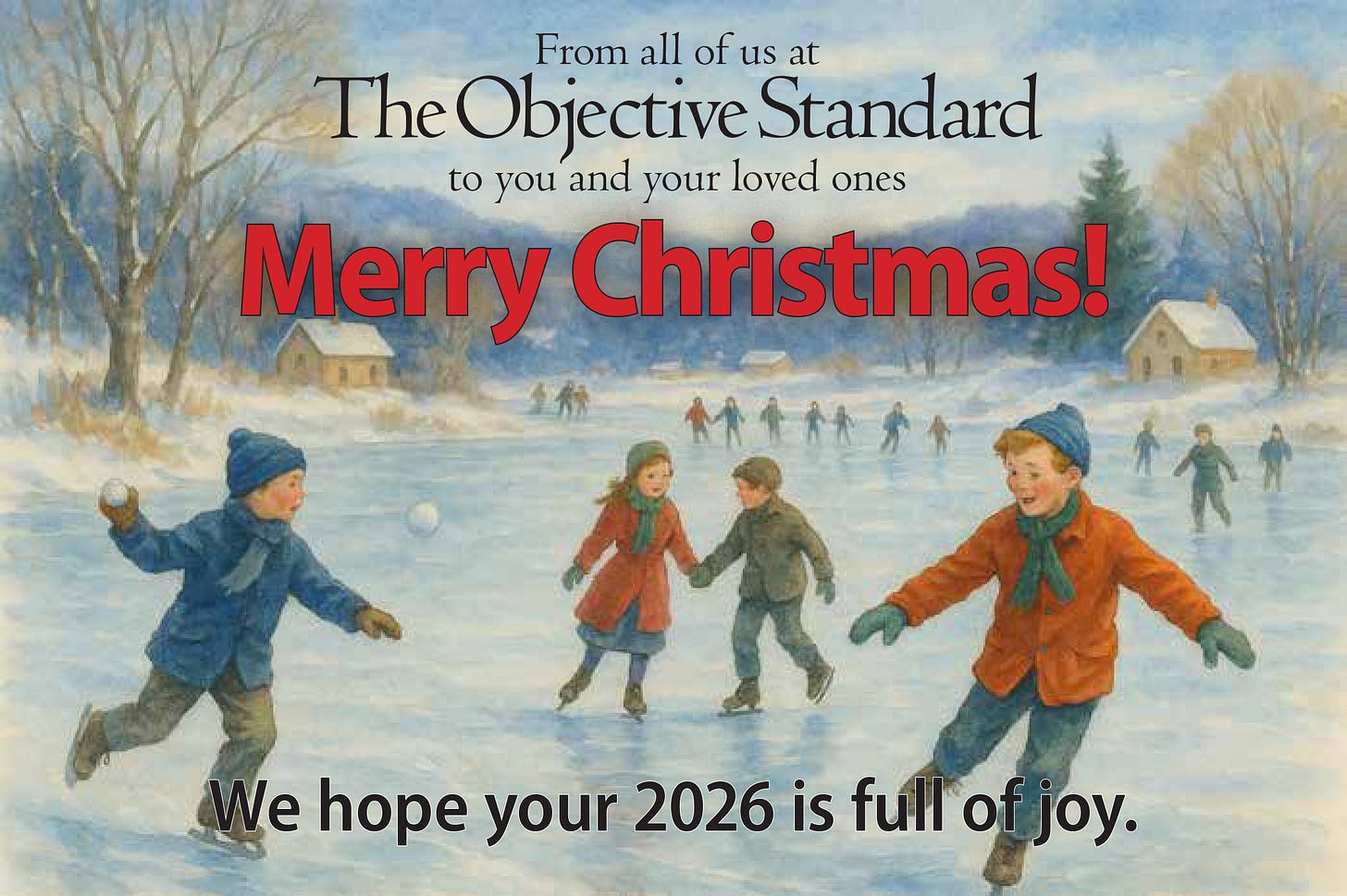I love Christmas and the whole season surrounding it.
Bookended by Thanksgiving—a celebration of the productiveness that makes human flourishing possible—and New Year’s Eve—a celebration of new beginnings and self-improvement—Christmas is about enjoying the fruits of our productiveness and virtue to date. The three holidays are themed and organized as if Jean-Baptiste Say and Ayn Rand decided the matter together: production, consumption, improvement.
From thoughtful gifts and cards, to sparkling trees and lavish decorations, to parties, caroling, ice skating, and mistletoe—Christmas is a celebration of the good: rationality, creativity, commerce, benevolence, family, friendship, happiness, love.
Although some people treat Christmas as a religious holiday about a selfless savior who suffered and died to atone for our sins, Christmas is in fact a secular holiday about selfish people living and loving life because of their virtues.
Enjoy the presents, enjoy the festivities, and love your loved ones with all you have. Delight in the material and spiritual wealth you have selfishly amassed.
Love Christmas. You earned it.
"A few years ago, I spent some time thinking about the meaning of Christmas. I am afraid I shocked my Christian neighbours when they realised I was looking for the secular meaning of Christmas, not the story of the baby in the manger. I think there is a wider, nonreligious meaning to the holiday, which I thought I would share...."People are a value.
"This is important. ... [W]e have an amazing standard of living. And we have it because of the millions of people — in our country and around the world — who are putting in a small, medium, or large effort to create values in the world. Some of these values are products or services we happily buy because they make our lives easier, or more productive, or more meaningful, or more enjoyable. Some of these values they just put out into the world, such as their funny cat videos or 'how to' videos for the gadget you just purchased and can’t get to work.
"So, I see Christmas as a time to celebrate the good in the people around you and in the world. To be grateful for the best within them and to recognise the value of that to you."~ Jean Moroney from her post 'Goodwill to Man' [hat tip Gus Van Horn]

The post Re-release: Christmas Is About Joy, Not Guilt appeared first on New Ideal - Reason | Individualism | Capitalism.

Download video: https://www.youtube.com/embed/0hJO4ofx6VU
Download audio: https://media.blubrry.com/new_ideal_ari/content.blubrry.com/new_ideal_ari/Christmas_is_about_Joy_not_Guilt.mp3


